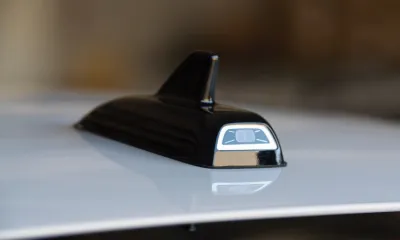Pulse Labs is excited to have guest author and seasoned auto industry executive Derrick Hatami contribute his vision and insights to this post.
Until recently, consumer and vehicle technology interactions often anchored on the outside world, where the focus was how the car related to the exterior environment. This includes things like anti-lock brakes, auto-dimming headlights, rain-sensing wipers, and backup cameras.

Those technologies are still important and extremely relevant. But now the technology horizon has shifted to the vehicle interior environment, driven in part by things like Amazon Alexa in homes and the related advent of voice controls, and facilitated by our ever-connected lives. Thus, vehicle technology has now expanded beyond safety to include increased convenience, entertainment and communications – ultimately to save time. This has been driven in part by consumer expectations for the same level of technology in vehicles as in every other part of their lives. In many cases, they expect even more.
And that’s where the eventual shift to autonomous vehicles will lead us: The vehicle will become the mobile office, classroom, and shopping mall for ultimate efficiency. Efficiency as in getting things done while the vehicle drives itself and as a transaction engine, such as buying electricity on its own as it recharges. Or just a personal sanctuary to relax while the vehicle takes you where you need to go.
All of these changes have already fostered a rush to add technology to vehicles at a staggering pace, with OEMs looking to one-up each other and appear to be the most cutting edge. Yet technology is a double-edged sword and adding it haphazardly can do more damage than good for brand image and sales potential.
An interior focus is not necessarily an all-new focus, of course. VW had positioned itself as a lifestyle brand and as part of that focused on interior touch and feel, often doing well in JD Power APEAL® results. That made cabins comfortable and inviting but not necessarily a technology hot spot. And earlier, Hyundai invested heavily in interior design to elevate that brand’s quality perception. That worked to a point, but at the time its exteriors did not share the same panache—until the arrival of the 2011 Hyundai Sonata, at which point the interiors and exteriors were equally contemporary.

It's that same kind of integrated planning that needs to happen today with technology in vehicle interiors. Here are some basic rules of thumb to use as a guide when evaluating when, where and how to introduce technology:
- Identify your vehicle’s target audience
- Clarify the vehicle’s positioning
- Quantify the target rivals’ success—or failure—in applying technology to vehicle cabins through benchmarking
- Understand the target audience’s willingness and ability to learn innovative technology
- Identify how technology in your vehicle can be used as a differentiator
- Balance the need to appear “contemporary” while minimizing distraction overload and customer frustration
- Ensure that the vehicle exterior and interior are at a minimum sending consistent messages
And as an extra point, don’t assume that new technology is better than existing technology, particularly regarding interfaces. Specifically, there is a simplicity and familiarity to knobs and switches that in some cases may be a better option than sliders and touchscreens. For example, you can feel a knob turning clockwise without having to look at it.
Even with the checklist above, the bar will raise continuously, driven by both OEMs and technology suppliers. The rules will change again with autonomous vehicles and virtual reality. There will be an entirely new opportunity for bells and whistles (and knobs!) the likes of which we have not yet seen.

Pulse Labs ICC™️ (In-Car Camera) solution is among the best research tools available to inform how to add technology to your vehicles. ICC™️ provides actionable insights on how consumers and vehicle technology interact in accessible and digestible video vignettes. And these interactions are captured under real world conditions with real drivers, not in labs or simulators and at a speed that helps you keep up with the competition. ICC™️ is used typically to benchmark rivals before development begins to identify best-in-class targets, then used during the development process as new technology is launched and all-new rivals appear. It’s also used after launch to measure the success of OTA updates. It’s also used to validate the success of white-labeled technology solutions.
Nobody wants a bad in-cabin user experience. But without using ICC™️ OEMs and suppliers risk embarrassing launches, social media backlash, or simply poor user experiences. Contact info@pulselabs.ai for more information and a demonstration of ICC™️.
About Derrick Hatami: Derrick is a seasoned senior executive with rich experience in the Automotive arena. He has held executive roles at OEMs, such as Vinfast, VW, Hyundai and Nissan, and at leading researchers, such as J.D. Power and Accenture. He has launched several new products and led large organizations in numerous functional areas including Sales, Marketing, Strategic Planning, Market Research, Product Planning, Customer Experience and Aftersales.




